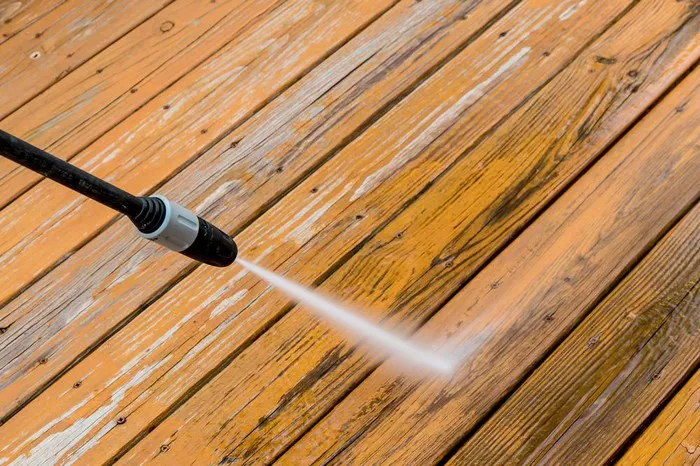In the realm of pressure washing, the downstream injector emerges as an indispensable tool, streamlining the process of mixing cleaning solutions into the water stream. Acting as a conduit between the pressure washer and the cleaning agent, this device significantly enhances the efficacy of cleaning tasks, making it a cornerstone of professional and domestic cleaning endeavors.
Importance of using a downstream injector for specific cleaning tasks:
The downstream injector offers a gateway to versatility in pressure washing applications. Whether tackling stubborn grime on outdoor surfaces, sanitizing industrial equipment, or revitalizing vehicle exteriors, its utilization ensures efficient dispersion of cleaning solutions, thereby amplifying the cleaning power of the pressure washer. By incorporating this technology, users can achieve superior results with less effort and time, making it an invaluable asset in the arsenal of cleaning professionals and enthusiasts alike.
How Downstream Injectors Work:
At the heart of its functionality lies a simple yet ingenious mechanism. As water flows through the pressure washer, a suction created by the injector draws cleaning solution from a separate container or reservoir. This solution then merges with the water stream, forming a potent cleansing agent that is propelled onto the target surface at high pressure. The result is a seamless fusion of water and cleaning solution, delivering maximum cleaning efficacy with minimal hassle.
Types of Downstream Injectors:
The market offers a spectrum of downstream injectors, each tailored to cater to diverse user needs and preferences. Among these, fixed-rate injectors and adjustable-rate injectors stand out as prominent contenders.
1. Fixed-rate injectors adhere to a predetermined dilution ratio, offering simplicity and consistency in operation. While ideal for users seeking convenience, their inflexibility may limit adaptability to varying cleaning requirements.
2. In contrast, adjustable-rate injectors provide users with the flexibility to fine-tune the dilution ratio according to specific cleaning tasks. This versatility empowers users to customize their cleaning solutions, catering to a broader range of applications. However, the complexity of adjustment settings may present a learning curve for inexperienced users.
Both types of injectors present distinct advantages and disadvantages, and the choice between them hinges on factors such as the user’s proficiency, the diversity of cleaning tasks, and the desired level of control.
Installation and Setup:
Installing a downstream injector onto a pressure washer system is a straightforward process, provided that the user adheres to proper procedures. Here’s a step-by-step guide to ensure seamless integration:
1. Select the appropriate injector: Choose a downstream injector compatible with the specifications of your pressure washer system and the cleaning solutions to be utilized.
2. Locate the injection point: Identify the designated injection point on the pressure washer, typically located downstream from the pump.
3. Connect the injector: Attach the injector to the injection point using compatible fittings, ensuring a secure and leak-proof connection.
4. Connect hoses: Connect the inlet hose from the cleaning solution reservoir to the injector’s suction port, and the outlet hose from the injector to the pressure washer’s water inlet.
5. Adjust settings: If using an adjustable-rate injector, adjust the dilution ratio according to the manufacturer’s instructions and the requirements of the cleaning task.
6. Test for leaks: Turn on the pressure washer and inspect the connections for any signs of leakage, tightening fittings if necessary.
By following these steps diligently, users can seamlessly integrate a downstream injector into their pressure washing system, paving the way for enhanced cleaning performance.
Safety Precautions:
While harnessing the power of a downstream injector, it is paramount to prioritize safety at all times. Here are some essential safety precautions to observe:
1. Chemical handling: Exercise caution when handling cleaning solutions, wearing appropriate personal protective equipment (PPE) such as gloves and goggles to prevent skin and eye irritation.
2. Proper ventilation: Ensure adequate ventilation in the work area to mitigate the risk of inhalation of fumes from cleaning chemicals.
3. Avoid spills: Take measures to prevent spills or leaks of cleaning solutions, minimizing the risk of environmental contamination or personal injury.
4. PPE usage: Encourage the use of PPE among all personnel involved in pressure washing activities, emphasizing the importance of protection against chemical exposure and high-pressure water.
Conclusion:
In conclusion, the downstream injector stands as a linchpin in the realm of pressure washing, facilitating the seamless integration of cleaning solutions into the water stream for optimal cleaning performance. By understanding its function, mechanisms, and types, users can harness its potential to elevate their cleaning endeavors to new heights. With proper installation, maintenance, and adherence to safety protocols, the downstream injector emerges as a catalyst for efficiency, effectiveness, and safety in pressure washing applications. Embrace its capabilities, and unlock a world of possibilities in the pursuit of pristine cleanliness.

